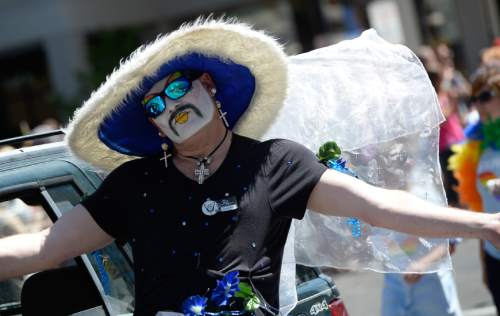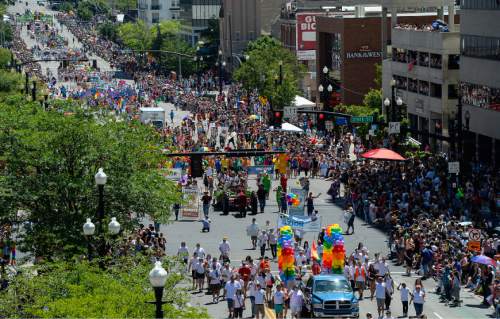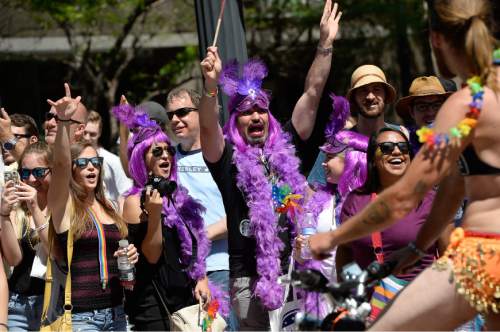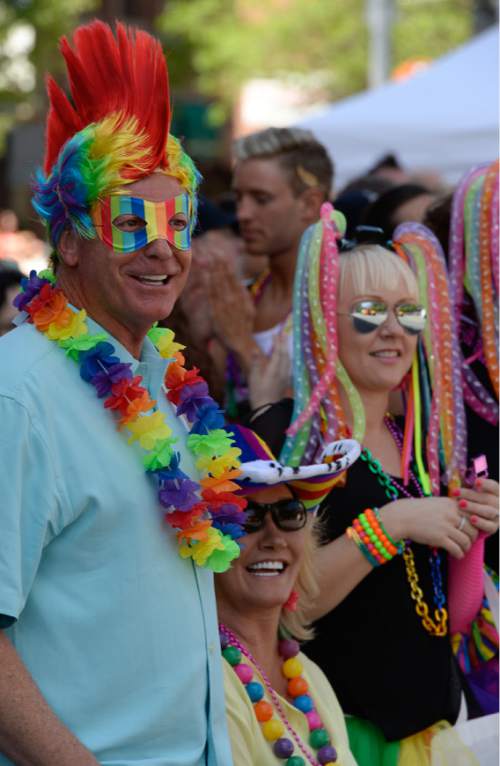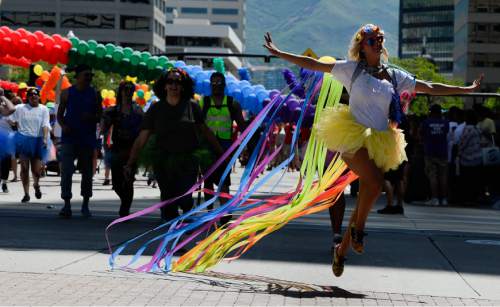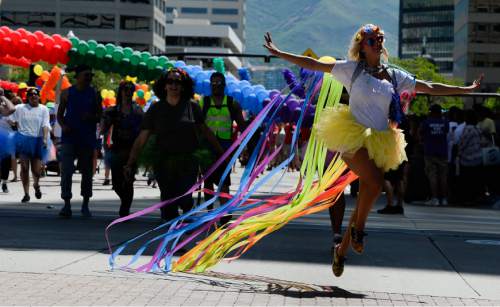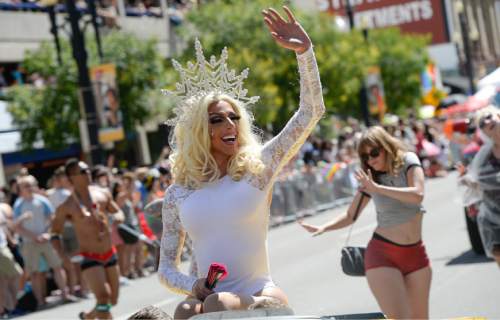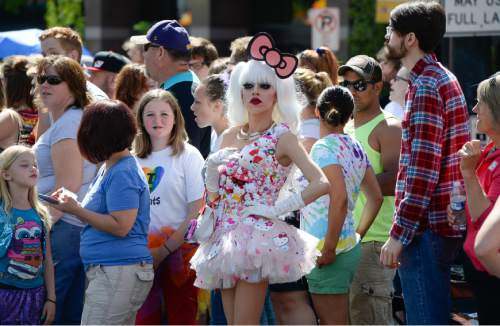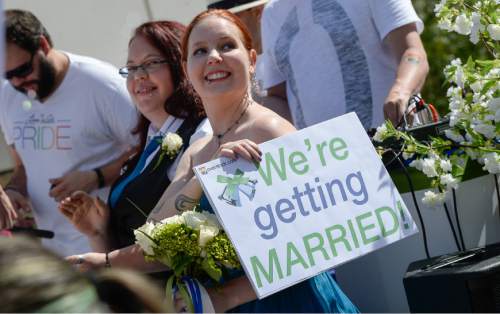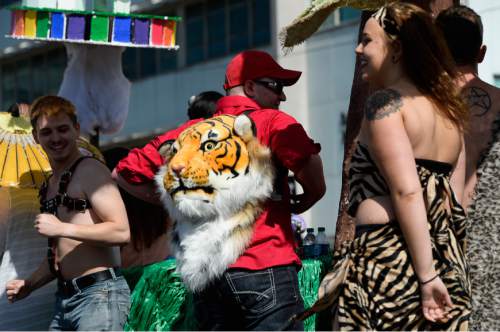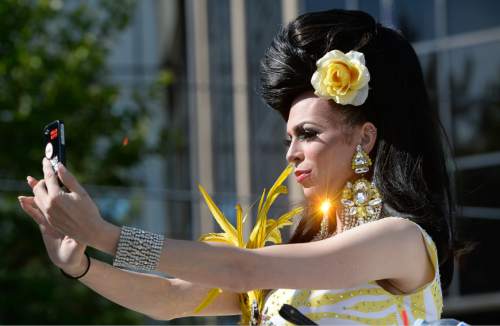This is an archived article that was published on sltrib.com in 2016, and information in the article may be outdated. It is provided only for personal research purposes and may not be reprinted.
The 2016 installment of the Utah Pride Festival will celebrate the past, present and future of the state's lesbian, gay, bisexual and transgender community with changes — from a fresh logo to new ticket options — that event organizers say they hope will launch a new era for the event and the center it supports.
"It's a very exciting time for us," event director Valerie Walker said Monday. "And there are going to be a lot of changes, but we do want to celebrate and look back at everything that brought us to this point."
The annual three-day event begins June 3 and will be Utah's 41st. It is the signature event of the Utah Pride Center and the main fundraiser for the center's programs.
At the top of the list of changes to the event: The decision not to select a single grand marshal for the event and the annual parade, but to instead honor three "icons" from the LGBT community.
"One from the past, one from the present and one that's going to be a future icon, who is really moving our community forward," Walker said.
So far, 250 individuals have been nominated for the honor, she said, and event staff soon will be seeking additional nominations from the public.
Some of the changes are out of the event's control, Walker said. The footprint of the festival will be smaller, due to some planned construction on the grounds of Washington Square, the parklike grounds surrounding Salt Lake City Hall.
That will lead to some changes in the way people enter and exit the event along with how its vendor booths, activities and entertainment stages are laid out.
The festival gates will also open early this year, on Friday night instead of Saturday.
"We want to move right from our [Friday] marches and rallies and right into the festival," said Walker, adding that some vendor booths and one entertainment stage will be open Friday evening.
Event ticketing is also in line for an overhaul, Walker said, with credit card purchasing available at the gate for the first time and a new three-day event pass.
Advance, online ticket sales are also being offered for the first time, with tickets slightly discounted from the at-the-gate cost. Online sales of the three-day pass and the "Emerald Pass," which includes a commemorative T-shirt and other items along with three days of event access.
Organizers plan to implement new levels of corporate sponsorship opportunities for the festival and the parade to help put the event on strong financial footing.
The festival has never failed to turn a profit, center board chairman Michael Aguilar said, but in more recent years, the event has been less profitable than it once was, and that takes a toll on the center's budget. Five years ago, he said, the festival was netting more than $300,000 and covered more than half the center's programs.
The festival's changes are also in line with a larger effort underway by the Utah Pride Center's new director, Carol Gnade, and board to evaluate the center and set strategic goals for its future, while managing financial resources and providing services to support the needs of Utah's LGBT community.
That work has shaped a new direction for the center that focuses on five key areas, Aguilar said. Those are: Offering a safe space for the LGBT community; providing mental and physical health-related services; creating enhanced partnerships with other LGBT organizations and service providers; uniting the community through services and events; and fostering community education.
"We can't do this work," he said, "if the Pride Festival isn't successful."


